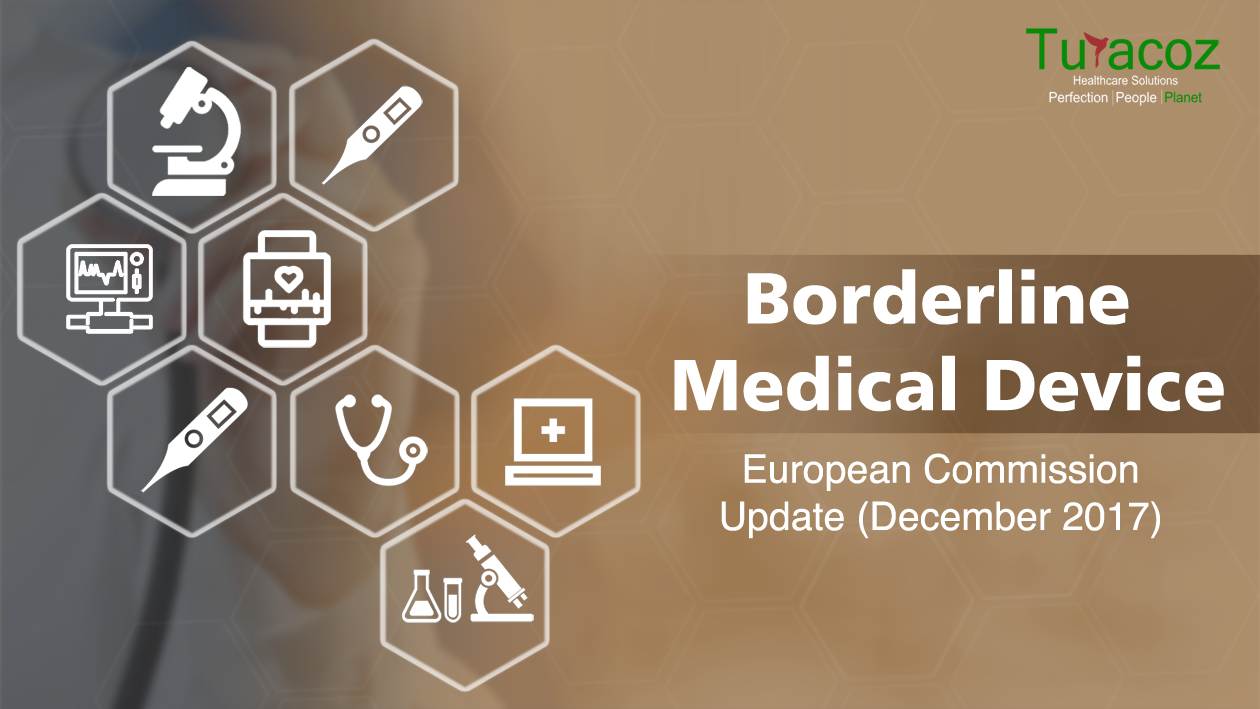When a device seems to fit onto the definitions of two or more product types, and cannot be clearly classified as a medical device, an in vitro diagnostic medical device, or an active implantable medical device, it is referred to as a borderline medical device. The 18th version of the Manual on Borderline and Classification in the Community Regulatory Framework for Medical Devices (Borderline Manual) was issued by the European Commission’s Medical Devices Expert Group (MDEG) on Borderline and Classification in December 2017. The manual complements MEDDEV 2.1/3 Rev. 3, which provides guidance on borderline products and other medical devices that incorporate pharmacological or biological substances. The appropriate classification of a medical device is important as it determines the device’s authorization process and marketing strategy. From a regulatory standpoint, the classification is usually based on its primary mode of action, intended use, and product claims.
The updated Borderline Manual includes recommendations on a total of 94 devices, including guidance on the classification of 12 additional product types; however, these recommendations are not legally binding. It is important to note that the decisions on the classification of a product remain a competence of the Member States, which may lead to different interpretations among different countries within the EU. However, to ensure a uniform approach, difficult cases may be discussed in the informal MDEG; the consensus statements from this meeting are published in the Borderline Manual.
The revised Borderline Manual indicates that the following products should generally be classified as medical devices:
- Mobile application for the assessment of moles (Class I)
- Liquid nitrogen for cryopreservation of cells and tissues of human origin for medical purpose (Class IIa)
- Alum styptic pencils (Class IIa)
- Dura guard for use with a craniotome (Class III)
- Heart bypass cannulae (Class III)
- Tissue expanders used in the breast (Class III)
On the contrary, the following products should, in principle, not be considered as medical devices:
- Mobile application for managing pictures of moles
- D-mannose for the prevention of urinary tract infections
- 8-MOP solution in extracorporeal photochemotherapy
- Products intended to reduce the effect of alcohol
- Radiation shields
- Microplate washers
It is important to note that based on criteria proposed by the Court of Justice of the European Union (CJEU) for borderline determinations, each product’s assessment should include several elements and be very factual; however, the guidance provided in the Borderline Manual often lacks such a detailed and balanced review. Moreover, some of the positions taken in the Borderline Manual may require reconsideration due to potential reclassifications brought by new European Commission Regulations. The new Regulations broaden the definition of a medical devices and also include some products without medical purpose within the purview of the new rules (especially products for aesthetic use). Although changes introduced by the new regulations may help resolve some of the existing borderline questions, divergent views on the classification of more complex products may persist.
Turacoz Healthcare Solutions, a medical communication company, specializes in various kinds of medical writing documents (Publication, Regulatory and Medico marketing) which covers a vast arena of clinical trials, drugs, medical devices, health economics and outcome research, observational studies etc. We take pride in providing customized, guideline compliant documents which are well within the committed timelines.






























